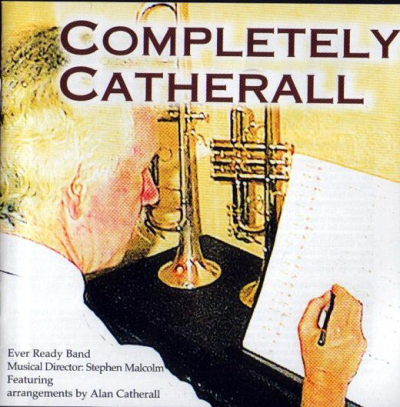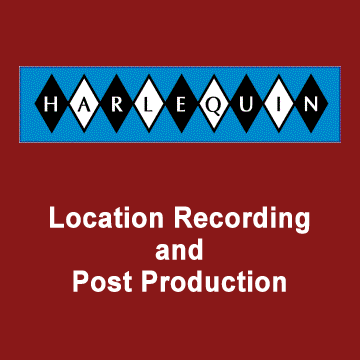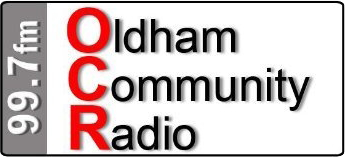Playlist 30 August 2020 |
Recording Details |
|
| Rhythm and Blues – Philip Sparke | Opening for weekly show Foden's Band MD: Michael Fowles - 2010 | 'Patrons' Choice III' - CD - Egon CD-SFZ154 - 2010 |
| Irresistible March - William Rimmer | Rhyl Silver Band MD: Nigel Birch - 2003 | 'Whit Friday Marches - Highlights from Delph March Contest 2003' - CD - |
| Triumphant Rhapsody - Gilbert Vinter | Massed bands Britannia Building Society, CWS (Glasgow), IMI Yorkshire Imperial GMD: Geoffrey Brand - 1991 | 'National Brass Band Championships of Great Britain & Gala Concert 1991' - CD - Polyphonic Recording QPRL 049D - 1991 |
| A Welsh Posy - Gustav Holst arr. Jeremy Cooper | National Fuels Distributors Parc and Dare Band MD: Paul Cosh - 1990 | 'Celtic Brass' - CD - Sain Recording SCD 4044 - 1990 |
| Zanette - Percy Code arr. Gregor Grant | Cornet Soloist Peter Read with the Besses o'th Barn Band MD: Roy Newsome - 1983 | 'Around the World with Besses# |
| The World's Greatest Storyteller arr. Philip Harper | The Household Troops Band BM: Carl Saunders - 2019 | 'Musicals Vol 2' - CD - SP&S CD 426 - 2019 |
| Ashokan Farewell - Jay Unger arr. Alan Fernie | Black Dyke Band MD: Dr. Nicholas Childs - 2005 | 'Essential Dyke Vol Vi' - CD - Doyen Recording DOY CD208 - 2005 |
| Encanto - Robert W. Smith | Scottish Borders Youth Brass Band MD: Alan Fernie - 2017 | 'Starlight' - CD - World of Sound CD126 - 2017 |
| Spirit of Celebration - Kenneth Downie | Yorkshire Building Society Band MD: David King - 1999 | ' Highlights European Brass Band Championships 1998' - DCD - World Wind Music 500.038 - 1998 |
| Cornet Cascade - Robert Docker | Massed bands Black Dyke Mills, Fairey, GUS (Footwear) and Yorkshire IMPs GMD: Geoffrey Brand - 1972 | 'National Brass Band Championships of Great Britain Festival Concert 1972' - Vinyl - Decca – SKL.5143 - 1972 |
| Chorale 'December 7th' from the movie Pearl Harbour - Hans Zimmer arr. Klaas van der Woude | Brass Band De Bazuin Oenkerk (The Netherlands) MD: Klaas van der Woude - 2007 | 'Far from Over' - CD - De Haske Recording dhr 03-046-3 - 2007 |
| Fantasia - Mario Burki | Euphonium Soloist Brendan wheeler with the Leyland Band MD: Russell Gray - 2007 | 'Pompeji' - CD - MF Records CD11976 - 2007 |
| Blitz - Derek Bourgeois | Yorkshire Building Society Band MD: David King - 1999 | 'Highlights European Brass Band Championships 1998' - DCD - World Wind Music 500.038 - 1998 |
| Ave Maria - Guilio Caccini arr. Thomas Wyss | Flugel Soloist Lucy Murphy with the Marple Band MD: Thomas Wyss - 2000 | 'The Right Stuff' - CD - MF Records CD8309 - 2000 |
| Second to None - Philip Sparke | Cory Band MD: Philip Harper - 2015 | 'Black Out' - CD - De Haske Recording DHR 03-062-3 - 2015 |
| The Buccaneer - Frank Seymour | Brighouse and Rastrick Band MD: Walter B. Hargreaves - 1969 | 'National Champions Brighouse and Rastrick Band' - Vinyl - |
| The Linden Tree - Franz Schubert arr. Rieks van der Velde | Brass Band De Wâldsang (The Netherlands) MD: Rieks van der Velde - 2009 | 'Darkness Visible' - CD - Lake Music Publications LMP 2009.01 - 2009 |
| Finale from The Pines of Rome - Respighi arr. Howard Snell | Chicago Brass Band (USA) MD: Dr. Colin Holman - 2002 | 'Live - Chicago Brass Band' - CD - CBB - Recorded Live - 7.06.2003 |
| Bombasto - Orion. R. Farrar arr: Alan Catherall | Ever Ready Band MD: Stephen Malcolm - 2003 | 'Completely Catherall' - CD - Doyen AMSCD066 - 2003 |
| Rhythm and Blues – Philip Sparke | Closing for weekly show Foden's Band MD: Michael Fowles - 2010 | 'Patrons' Choice III' - CD - Egon CD-SFZ154 - 2010 |
Sunday Bandstand 30 August 2020

On this week’s show we feature the march Bombasto written in 1895 by Orion R. Farrar (April 15, 1866-c. 1929). He was an American marching band director and composer. Farrar was born in Indianapolis, Indiana, the son of an English shoemaker named John Farrat and an Indiana boots and shoes shopkeeper named Amanda Wilson. Around 1880, his family moved to Gosport, Indiana, and shortly after to Warren, Ohio. At the age of 19, Farrar enrolled in the famous Dana Musical Institute in Warren, studying theory, composition, and cornet playing. Following graduation, he taught brass instruments and conducted the Institute band for seven years. In 1892 at Onarga, Illinois, he married music teacher Sarah G. (Hannah?) Kennedy. He became a member of Old Erie Masonic Lodge No 3 in 1894 and was active until 1904, when he was expelled for non-payment of dues.
As a march composer, he is most remembered for Bombasto, Indiana State Band, Hi Henry’s Triumphal, and The Telegram marches. Bombasto found an enduring place in the circus band repertoire, as well as in the libraries of municipal bands throughout America. In 1904 he abandoned music and became insurance agent for the Youngstown Dollar Bank. In 1905 he was offered the position of bandmaster of the New Merchants Municipal Band in Lima, Ohio, but rejected it because he already had a high position as agent in Ohio, Indiana, and Michigan for Reliance Life Insurance Co. of Pittsburgh, PA.
He did conduct the Merchants Band at Faurot Opera House Lima, on December 30, 1905, which was his very last known musical activity. In 1912 and 1913 he was president of the Columbus Securities Co. in Indianapolis while residing in New York City, NY. In 1915 he founded Midland Underwriters Association insurance brokerage in Albert Lea, Minnesota, where he also took residence.
The final years of Farrar’s life remain a mystery. He was listed on the 1920 census in Jacksonville, Florida, with his wife Hannah who was born in Ohio c. 1878. Some believe that he died by 1919 because in 1920 his wife settled as widowed music teacher in Long Beach, California. Others say that he was purported to have died in California in c. 1925-1929, but this is undocumented.
The Bombasto march on this programme has been arranged by Alan Catherall and closes this week's show. The recording is taken from a CD which is our featured photograph and illustrates Alan Catherall's music throughout.



















